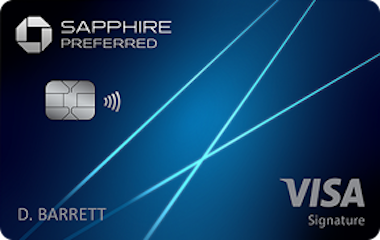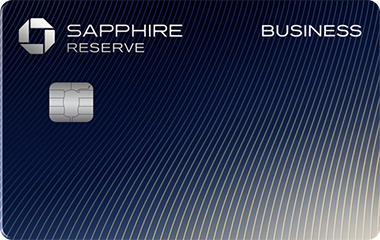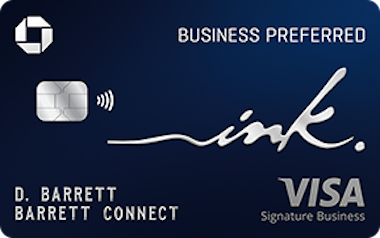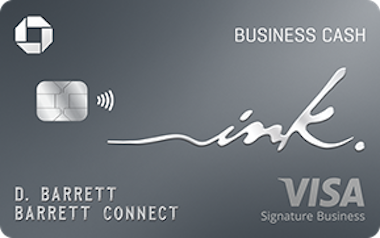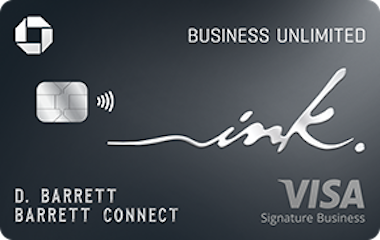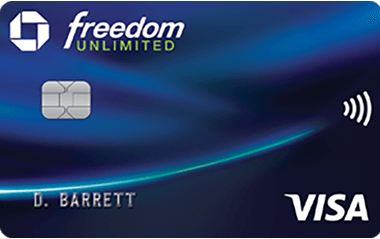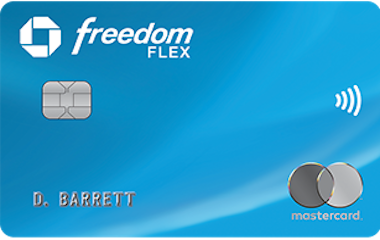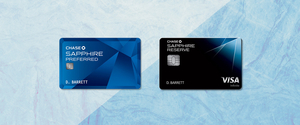Chase Sapphire Preferred Credit Card Review
Key Takeaways
The Sapphire Preferred is ideal for those who either cannot yet qualify for the Sapphire Reserve or don't anticipate using the Reserve's complete set of premium benefits. With a $95 annual fee, it delivers excellent long-term value through point multipliers, a $50 hotel credit, and a 25% bonus when redeeming points through the Chase Travel portal. The current sign-up bonus offers 75,000 points, which equals $750 in travel when redeemed through Chase.
For beginners thinking about long-term rewards, the Sapphire Preferred presents a strategic and cost-effective way to accumulate valuable Ultimate Rewards points.
Why This Card Could Be Right For You
The Chase Sapphire Preferred® is a great choice for:
- Those who don’t qualify for the Sapphire Reserve but want to earn transferable points
- Couples playing the “two-player game”—one person gets the Reserve, the other the Preferred to stagger sign-up bonuses
- Travelers looking for a low annual fee card with high rewards potential
With the Preferred, you get a $50 hotel credit (when booking through the Chase portal), plus 25% more value when redeeming points for travel. The standard 75,000-point sign-up bonus is worth $750 when used this way. Other perks include:
- 5x points on travel through the Chase portal
- 2x on other travel purchases
- 3x on dining, online grocery purchases, and select streaming services
- Free DashPass membership, solid travel insurance protections, cell phone coverage, and extended warranty benefits
When The Usual Advice Doesn't Apply
This card might not be the best choice if you qualify for the Reserve and prefer more robust travel perks and the 1.5x redemption value. Or you’ve earned a Sapphire sign-up bonus in the last 48 months (you can only earn one every 4 years)

What to Know About Chase Ultimate Rewards
Chase Ultimate Rewards is our most valued point system.
- These points are the most flexible of any credit card points. You can transfer points to their partners (the most valuable way to redeem)
- Or you can book travel directly through the Chase portal, including cruise, car rental, or specialty hotels.
- The quality of their transfer partners (Hyatt, United & Southwest) is unmatched. As is the value you can get when you transfer.
- You can get a “multiplier effect” on your Chase Ultimate Rewards points when you have either of Chase’s Sapphire cards by taking advantage of Points Boost.
- We view Ultimate Rewards as the points “savings account” to top off a partner reward system for a flight or hotel. Or to book travel items directly through the Chase travel portal.
How The Chase Sapphire Preferred Credit Card Fits In The Chase Ultimate Rewards Ecosystem
The Sapphire Preferred is one tier below the Sapphire Reserve and offers solid benefits at a much lower annual fee. Here's how it compares:
- $95 annual fee vs. $795 for the Reserve
- 25% more value on Chase Travel portal redemptions vs. 50% with the Reserve
- $50 hotel credit (Preferred) vs. $300 general travel credit (Reserve)
- No airport lounge access or TSA PreCheck/Global Entry credit, which are offered with the Reserve
Still, if you’re part of a couple, this card works great when paired with the Reserve. Chase allows household point transfers, so you can move points from the Preferred to the Reserve and redeem them at the higher 1.5x rate.
Once you start adding Chase business cards (like Ink Cash or Ink Unlimited), having a Sapphire card becomes essential. These business cards earn points but don’t offer transfers to airline or hotel partners — only a Sapphire Preferred or Reserve can unlock that perk.
And if you decide the Preferred isn’t worth the fee after the first year, you can downgrade to a Freedom card. Just make sure you use or transfer any points beforehand, since Freedom cards don’t allow direct transfers to travel partners.
My Experience, No Filter
In our two-player household, my wife holds the Sapphire Reserve while I carry the Sapphire Preferred. It’s a great balance—we each earned a bonus, we can share points, and we’ve maximized the perks that matter most to us. When I applied, the offer was elevated to 75,000 points, which was a big part of my decision. If you’re not in a rush, it’s often worth waiting for a higher bonus.
If I were doing this solo and could qualify for the Reserve, I’d go for that one instead. The benefits are stronger and the higher fee is easily offset if you travel often. But for starting out, or if you’re splitting strategy across multiple cards and players, the Sapphire Preferred is a fantastic foundation.
Card Information
| Bonus Points | Minimum Spend | Point Value | Annual Value | Annual Fee |
1st Year Value
|
|---|---|---|---|---|---|
| 75,000 | $5,000 | 1.6 ¢ | $92 | $95 |
$1177
|
| Bonus Extra | Differentiating Perks | Rules |
|---|---|---|
| $50 Annual Chase Travel Hotel Credit | 3X points on dining, delivery, online grocery & streaming services | Sapphire Lifetime , 5/24 , Chase 2/30 , Chase 4/6 |
Most Recent Special Offer
$5,000 spend ended May 2025
Spend Categories
2X points
3.2¢ Per Dollar Spent
1X points
1.6¢ Per Dollar Spent
3X points
4.8¢ Per Dollar Spent
3X points
4.8¢ Per Dollar Spent
2X points
3.2¢ Per Dollar Spent
2X points
3.2¢ Per Dollar Spent
3X points
4.8¢ Per Dollar Spent
2X points
3.2¢ Per Dollar Spent
5X points
8¢ Per Dollar Spent
5X points
8¢ Per Dollar Spent
3X points
4.8¢ Per Dollar Spent
Card Benefits
Using this card give you primary car rental coverage for theft and collision damage up to the cost of the vehicle in the U.S. and abroad.
Travel accident insurance up to $500,000; lost luggage insurance up to $3,000 per person; trip cancellation insurance up to $10,000 per person; baggage delay insurance up to $100 per day for 5 days; trip delay reimbursement up to $500 per ticket
You will pay no foreign transaction fees when you use your card for purchases made outside the United States.
Call 1-800-953-7392 to get complimentary assistance making dinner reservations, buying theater tickets, getting travel guides, sending gifts/flowers, and dozens of other specific requests.
A flat $59.95 fee for towing up to 5 miles, tire changing, jump starting, locksmith service, fuel delivery and standard winching; cardholder will be charged for any additional services or goods provided.
For a limited time get up to $300 in Chase Travel statement credits in the first year of account opening for any purchases made on Chase Travel.
Your new purchases are covered for 120 days against damage or theft up to $10,000 per claim and $50,000 per account.
This card extends the manufacturer's warranty by an additional year on warranties of three years or less.
Chase Sapphire Preferred Application Rules
You may be ineligible to earn a signup bonus on a Sapphire card if you currently have a Sapphire personal card open, previously held the same card, or received a new cardmember bonus for the same card
Your application will be declined if 5 new cards are reported on your personal credit report in the past 24 months
You'll be declined if you apply for a third Chase card of any kind within 30 days
Chase will decline your application you apply for a 5th Chase card (personal or BUSINESS) in 6 months
Ranking of Cards Offering Chase Ultimate Rewards
Best for Series
Below is a snapshot of where this card performs best compared to the other cards in our database:


